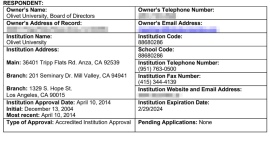
A group of priests from Hastings, Minnesota decided to put purple glitter in the ashes traditionally used to mark the start of Lent out of their symbolic support for the members of the LGBTQ.
WND reported that the group of priests provided an "ashes-to-go" service at downtown Hastings, right on the sidewalk outside Geek Haven Coffee.
According to Star Tribune, hospital chaplain Rev. Michael Le Buhn, Jr. purposefully placed the purple glitter in line with their Glitter Ash Wednesday ministry. Their aim is to show the public that their churches and the City of Hastings are welcoming to LGBTQ residents. The Star Tribune explained that the ministry's actions are in response to what happened to the transgender child of former school board chair Kelsey Waits. The child was outed by a local Facebook group that eventually pushed the Waits to leave the city and garner national headlines.
The Glitter Ash Wednesday priests gathered attention in the small town for putting the purple glitters in the ashes. Passersby honked their cars, waved, and gave the priests a second look than it gave attention to the faithful lining up for the ashes.
"Us out here with our collars on and our 'Glitter Ash Wednesday' sign, especially in a small town like this, word is getting around," Le Buhn said.
Le Buhn shared that he learned about the Glitter Ash Wednesday in 2018 while still being a student in Tennessee. The ministry was launched in 2017 by Episcopal and Presbyterian clergy from New York. Le Buhn disclosed that Glitter Ash Wednesday makes him more authentic in his ministry as a priest than any of the rituals he participated in.
"Glitter Ash Wednesday is when I feel the most authentic in my ministry. It's when I feel like I'm participating in a ritual that I can 100 percent say, 'Amen,' at the end with no hesitation, no reservation. Whereas these other rituals have been used and will be used in congregation after congregation after congregation that absolutely is not welcoming to my trans siblings," Le Buhn revealed.
Other priests such as Lutherans, an Episcopal, and a Presbyterian then joined Le Buhn in the ministry when he started it downtown and in Pioneer Park. While the Hastings Inclusion, Diversity, & Equality Alliance or Hastings IDEA and the Afton Invisible supported him in the endeavor. The ministry has gone to the extent of making biodegradable glitter ash for their Ash Wednesday services in their respective churches.
The St. Luke's episcopal Church priest, Rev. Beth Wanamaker said she joined the ministry out of becoming "passionate" for transgender rights upon witnessing what happened to the Waits last year. Wanamaker stressed that what they do for the ministry is an authentic statement of welcoming the LGBTQ.
"I really wanted folks to know that when we say we welcome all, we do," Wanamaker stressed.
Some of those who appreciated included a Lutheran resident named Amy Fox who openly expressed that she loved having the purple glitters along with the ashes on her head. Her sister-in-law, Jen Fox, came to a liking of it, too, that she had them put on despite not being a churchgoer. Jen, the city's council member, said that she did so in support of the LGBTQ.
"I love that this is in solidarity with the LGBTQ community. That's something I can be blessed by," Jen said.
On the other hand, West Coast Episcopal Seminary Church Divinity School of the Pacific Dean Rev. Ruth Meyers raised that putting the glitter in the ashes creates a significant change on affixing the ashes. She expressed fears that it would undermine the entire message the ashes convey, which is preparatory for the week leading to Easter. She cited that the very words or formula said by a priest or pastor when the ashes are placed on the head signify the need for repentance in the light of man's mortality.
"The ashes are intended as a sign of repentance. They are a mark of mortality. The historic words that are said is, 'Remember that you are dust and to dust you shall return.' The glitter just really changes that symbolism pretty significantly. When you introduce a dramatic change like this, you have conflicting narratives that are happening there with the symbol," Meyers said.
"One is that sign of repentance, of deep humility, of rootedness in the earth, of really getting in touch with our mortality. And then the real celebratory sign of the glitter. And those two don't fit easily together," she stressed.



















